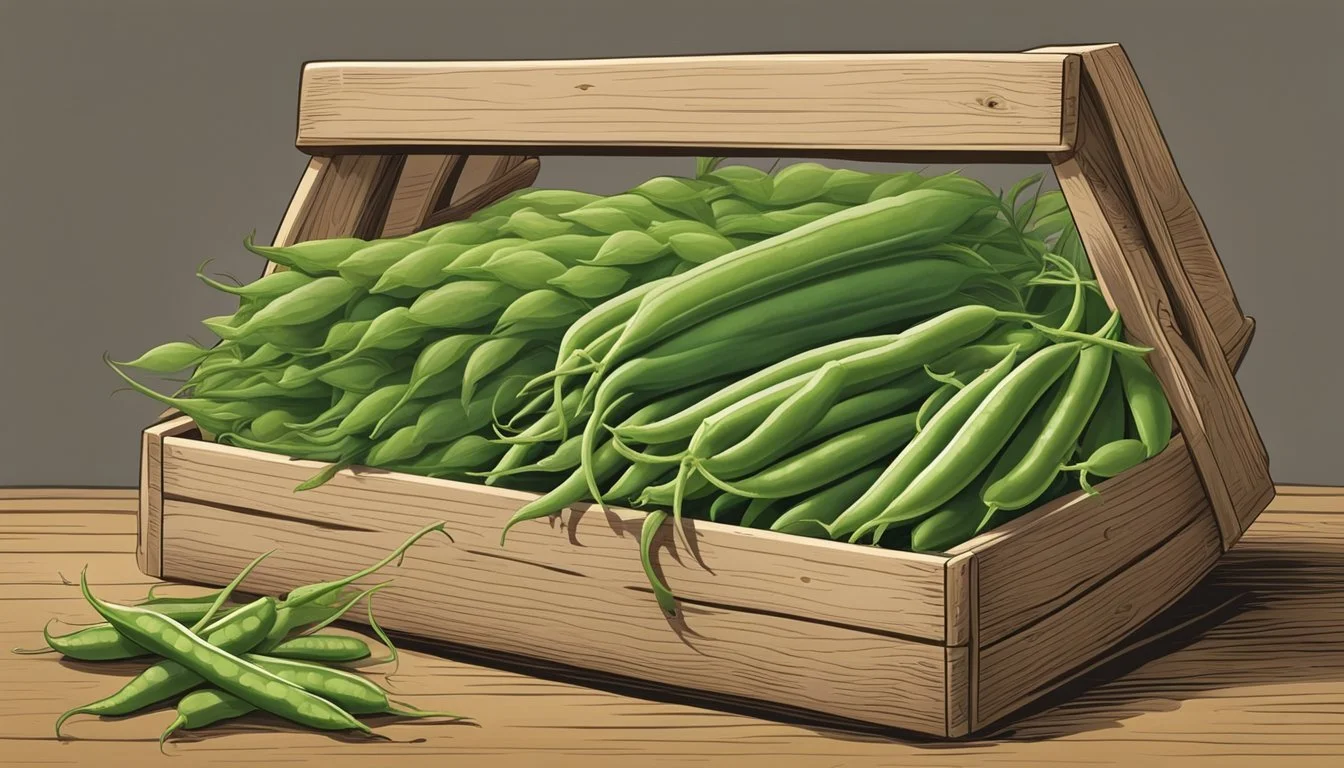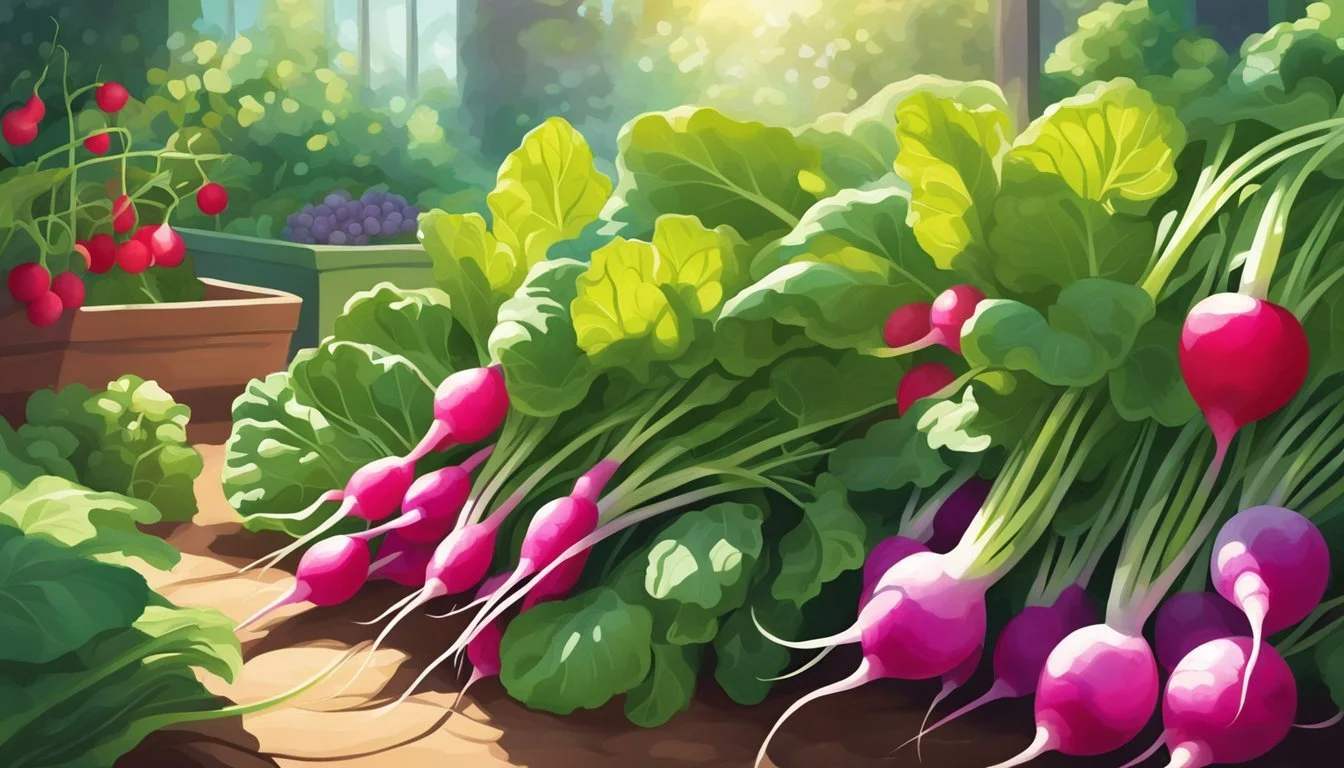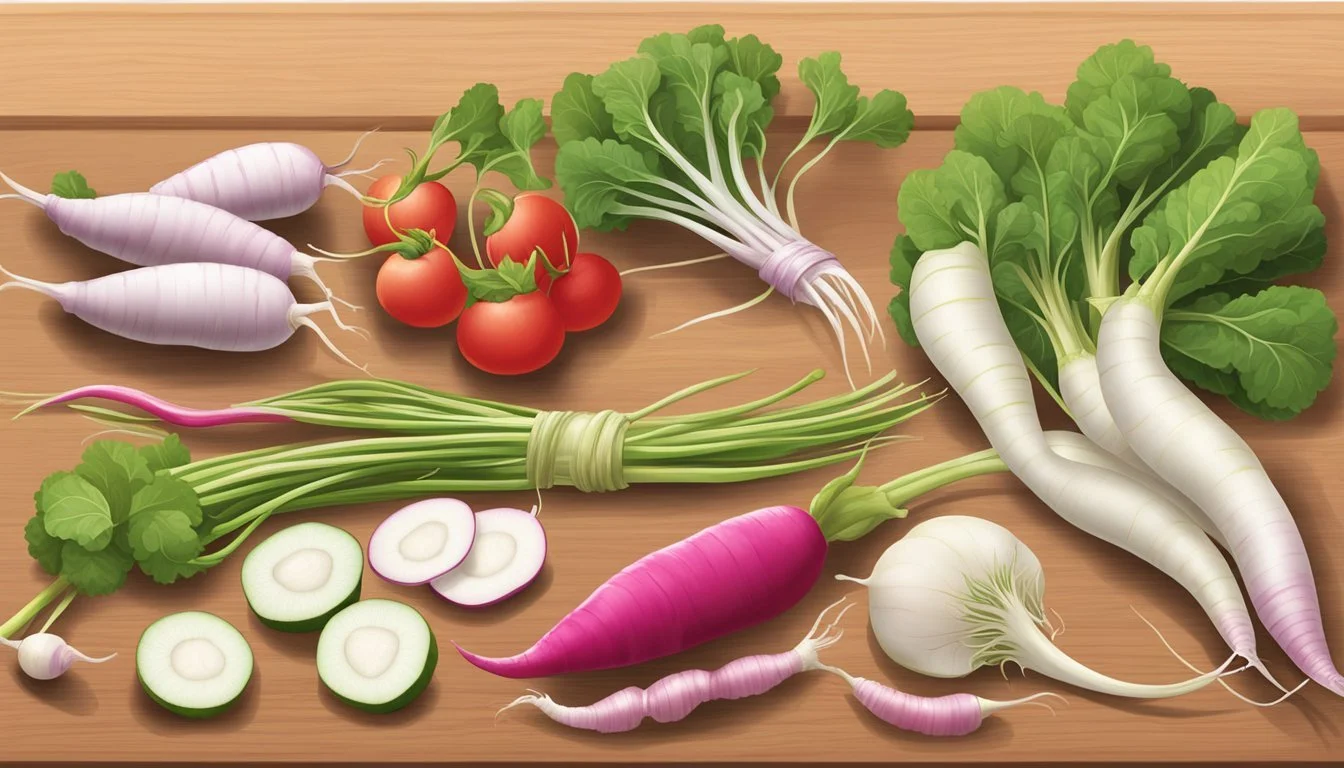Rat-tail Radish Substitutes
Best Alternatives for Your Recipes
Looking for a substitute for rat-tail radishes? You're not alone. These unique radish varieties, known for their edible seed pods, can be a bit tricky to find. Despite their distinctive flavor and crunchy texture, there are several viable alternatives to consider.
Horseradish root makes a great substitute due to its spicy flavor profile. Mixed with salt and vinegar, it can mimic the tanginess of rat-tail radishes. Another solid option is jicama, which, with its sweet and nutty flavor, adds a similar crunch to salads.
Additionally, parsnips, closely resembling pale carrots, can be used in place of rat-tail radishes in numerous recipes. Whether you're aiming to replicate the texture or the distinct bite, you're sure to find a suitable stand-in with these substitutes.
Understanding Rat-Tail Radishes
Rat-tail radishes, also known as serpent radish or pod radish, are distinct from traditional radishes both in appearance and cultivation. This section discusses their botanical characteristics, culinary uses, and historical significance.
Botanical Profile
Rat-tail radishes are an annual plant that thrives in warm climates. Unlike traditional radishes, they do not produce edible roots. Instead, their edible parts are the long, slender pods which grow between 3 and 4 feet tall.
The plant prefers full sun and well-drained soil, enriched with compost for optimal growth. Seeds are sown directly in the garden at a depth of 1/4 to 1/2 inch. They should be spaced about a foot apart to allow room for growth.
Culinary Uses
The pods of rat-tail radishes are prized for their crunchy texture and spicy flavor. These pods can be eaten raw, often added to salads for a burst of flavor. They also serve well in stir-fries and pickles, maintaining their crispness even when cooked.
Young seedlings are edible too and can be harvested to add a spicy note to salads. The versatile pods offer a unique taste that differs from the root radish, making them a popular choice for diversifying dishes.
Historical Significance
Rat-tail radishes trace their origins back to Asia and were introduced to Western gardens in the 1860s. They gained popularity due to their heat tolerance, allowing them to be grown throughout the summer—a season when many other radish varieties bolt.
These heirloom vegetables hold a special place in gardening traditions, appreciated for their uniqueness and resilience. Their ability to produce pods in abundance has made them a valuable crop in sustaining food supplies during warmer months.
Cultivation Essentials
Cultivating rat-tail radishes requires specific growing conditions, careful planting techniques, and regular maintenance to ensure a bountiful harvest.
Optimal Growing Conditions
Rat-tail radishes thrive in full sun and well-drained soil. They are versatile and can be planted in spring, summer, and autumn, making them suitable for various climates. These hardy annuals prefer temperatures between 60-75°F. While they can tolerate heat better than most radishes, providing a stable environment is crucial. Amend the soil with compost to boost fertility, and ensure it's free of stones and debris. Maintain a slightly acidic to neutral pH for optimal growth.
Planting Guidelines
Plant rat-tail radish seeds directly into the garden soil. Sow the seeds around ½ inch (1 cm) deep, spaced 1-2 inches apart. Maintain rows 12 inches apart to allow for proper air circulation. Using a sifted seed raising mix on top can promote better germination. When seedlings appear, thin them to about a foot apart to prevent overcrowding. For continuous harvests, succession planting every few weeks is recommended, especially in the spring and summer.
Maintenance and Care
Regular watering is essential, especially during dry spells, but avoid waterlogging. Applying mulch helps retain moisture and suppress weeds. Rat-tail radishes benefit from occasional feeding with a balanced fertilizer. Remove any competing weeds to ensure better nutrient absorption. Inspect plants regularly for pests and diseases, implementing organic pest control methods as necessary. As the plants grow, they may reach 3-4 feet in height, so staking may be required to support taller growth. Keep an eye on the overall health and vigor to prevent bolting.
Harvesting and Storing
Rat-tail radishes have a unique harvest technique and specific storage methods to ensure long-term freshness. Proper handling can enhance their flavor whether used fresh, pickled, or in various recipes.
Harvesting Techniques
Harvesting rat-tail radishes requires careful timing. The optimal moment to pick them is when the seed pods, not the roots, are mature and reach approximately 9 inches in length. They should be firm and slightly green. Use clean garden shears to cut the pods from the plant. This maintains plant health and encourages further growth.
Check the plants regularly during the growing season. Harvest every few days to collect the mature pods. By routinely picking the pods, you prevent over-maturation, which can lead to bitterness.
Storing for Freshness
To store rat-tail radish pods, the first step is to wash and thoroughly dry them. Excess moisture can lead to premature decay. Place the cleaned pods in a breathable container, such as a perforated plastic bag, to allow air circulation.
For longer storage, consider pickling the pods. Pickled rat-tail radishes can be stored in the refrigerator for several months. Another option is to freeze the pods, but blanch them first to preserve their texture and flavor. Blanched pods can be stored in airtight containers in the freezer for up to a year. Proper storage ensures that the pods maintain their crispness and flavor.
Common Substitutes
When replacing rat-tail radishes in recipes, it's important to choose substitutes that provide similar flavors and textures. Options include using other edible pods or root vegetables known for their crunch and taste.
Similar Edible Pods
Green Beans: These are a great choice for adding a crisp texture to dishes. Thinly sliced green beans can mimic the crunch of rat-tail radishes in salads and stir-fries.
Pea Pods: Snap peas and snow peas are also excellent alternatives. They offer a slight sweetness and crunchy texture parallel to rat-tail radishes. Both can be used raw or cooked, making them versatile for various recipes.
Alternative Root Vegetables
Jicama: This root vegetable is sweet and nutty with a satisfying crunch. It can replace rat-tail radishes in salads, providing similar texture without the spiciness.
Kohlrabi: Known for its mild taste, kohlrabi slices can be a good substitute. It has a slightly sweet flavor and can be used raw or roasted, ensuring flexibility in different dishes.
Horseradish Root: When roasted, horseradish root softens and works well as a radish substitute. Its spicy notes can be managed by proper seasoning, making it a viable option for recipes requiring a punch of flavor.
Pest Management and Challenges
Proper pest management and addressing plant diseases are crucial for successfully growing rat-tail radishes. Gardeners must be vigilant about common pests and proactive in implementing disease prevention measures.
Preventing Common Pests
Rat-tail radishes are susceptible to several pests, including aphids, flea beetles, and cabbage loopers. Aphids can cause yellowing and stunted growth by sucking plant sap. To control aphids, introduce beneficial insects like ladybugs or apply insecticidal soap. Flea beetles create small holes in leaves, which can be prevented by covering plants with row covers and maintaining a fine layer of mulch.
For cabbage loopers, hand-picking or using biological pesticides like Bacillus thuringiensis (Bt) are effective. Regularly inspecting plants and removing affected areas also helps. Keep the garden clean and free from debris to prevent pest habitats.
Mitigating Plant Diseases
Rat-tail radish plants can be affected by diseases such as powdery mildew, clubroot, and downy mildew. Powdery mildew presents as a white powdery substance on leaves and can be managed by ensuring good air circulation and avoiding overhead watering. Use fungicides if necessary. Clubroot is a more serious soil-borne disease caused by Plasmodiophora brassicae, leading to swollen and misshapen roots. Rotate crops and increase soil pH with lime to reduce incidence.
Downy mildew appears as yellow spots and a downy growth on the underside of leaves. It can be mitigated by keeping the foliage dry and using resistant varieties. Planting in well-drained soil and ensuring plants are adequately spaced can also prevent disease spread. Regular monitoring and early intervention are key to maintaining plant health.
Culinary Inspirations
Rat-tail radishes bring a crisp and spicy flavor to a variety of dishes. Whether incorporated into fresh salads or used in hearty main courses, their unique taste can elevate any meal.
Salad and Side Dish Recipes
Rat-tail radishes add a delicious crunch to salads. Sliced thinly, they can be mixed with greens, tomatoes, and cucumbers for a vibrant dish. Jicama and beetroot can substitute rat-tail radishes, providing a similar crisp texture.
In side dishes, rat-tail radishes can be lightly steamed or quickly stir-fried with garlic and soy sauce. For a more pickled flavor, try Korean radish seasoned with vinegar and chilli flakes.
Main Course Applications
Rat-tail radishes also shine in main courses, offering a spicy kick in curries and stir-fries. They can be added to a vegetable mix and sautéed with tofu, bell peppers, and snap peas.
For a roasted option, toss them with olive oil, salt, and herbs, then roast until tender. Horseradish roots or parsnips can substitute rat-tail radishes in these dishes, providing a different yet complementary flavor profile.
Gardening Tips for Success
For growing rat-tail radishes, it's important to focus on the location, soil, and watering techniques. These elements are crucial for ensuring a healthy harvest of this unique vegetable.
Choosing the Right Location
Rat-tail radishes thrive in full sun conditions. It's essential to choose a location in your garden that receives at least 6 hours of direct sunlight each day.
Avoid areas with excessive shade as this can limit plant growth. These radishes can grow between 3 and 4 feet tall, so ensure the spot has adequate vertical space. Since they do well in warm climates, they can be planted throughout the summer without concerns of bolting.
Soil Preparation and Fertilization
Proper soil preparation is key to successful rat-tail radish growth. They prefer well-drained garden soil that is rich in organic matter. Before planting, amend the soil with compost or a balanced organic fertilizer.
Planting depth: Sow seeds at a depth of ¼ to ½ inch. Thin the seedlings to space them about a foot apart. Eating the thinnings is recommended, as they are both nutritious and tasty.
Watering Methods and Tools
Consistent watering is necessary, especially during dry periods. It's best to keep the soil evenly moist but not waterlogged. Overwatering can lead to root rot and other issues.
Use a drip irrigation system or a soaker hose to provide a steady supply of water to the plants while reducing evaporation. For larger plants, consider using mulch around the base to retain moisture and reduce weeds. Aim to water early in the morning for optimal water absorption.





